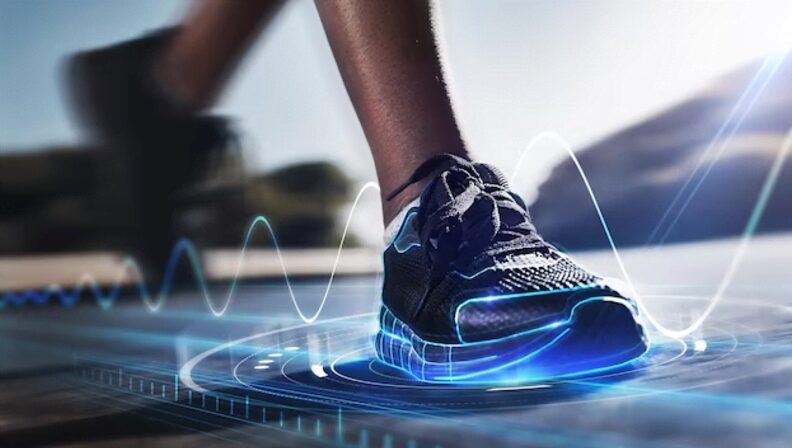Table of Contents
In recent years, there has been a growing interest in wearable devices that can generate electricity from the movement of the wearer. Energy-harvesting shoes and insoles are one such device that has gained attention. These innovative devices are designed to convert the natural movement of the body into usable electricity, making them a potential source of sustainable energy. By harnessing the power of every step, energy-harvesting shoes and insoles have the potential to reduce our reliance on traditional power sources and promote a more sustainable future. In this article, we’ll take a closer look at how energy-harvesting shoes and insoles work and the benefits they offer.
How do energy-harvesting shoes and insoles work?
Energy-harvesting shoes and insoles utilize a variety of technologies to convert the mechanical energy from the wearer’s footsteps into electrical energy. The most common technology used is piezoelectricity, which works by using crystals or ceramics that produce an electrical charge in response to mechanical pressure.
When the wearer steps on the energy-harvesting shoe or insole, the pressure from their footsteps causes the piezoelectric material to generate an electrical charge. This charge is then harvested and stored in a small battery or generator embedded in the shoe or insole.

In addition to piezoelectricity, some companies also use electromagnetic or thermoelectric technology to generate electricity. Electromagnetic energy-harvesting technology uses magnetic fields to generate electrical energy, while thermoelectric technology uses temperature differences to create a voltage across a material. Regardless of the technology used, the energy generated is stored in a battery or generator that can be used to power electronic devices or stored for future use.
The benefits of energy-harvesting shoes and insoles
Energy-harvesting shoes and insoles offer a number of benefits that make them an attractive option for consumers interested in sustainability and innovation. One of the primary benefits is their ability to reduce our reliance on traditional power sources, such as batteries or power outlets. By generating electricity from the natural movement of the body, energy-harvesting shoes and insoles offer a unique and sustainable alternative to traditional power sources.
In addition to their energy-generating capabilities, energy-harvesting shoes, and insoles can also be used to power electronic devices such as smartphones, GPS trackers, or other wearable technology, making them an ideal solution for individuals on the go. This means that individuals can keep their devices charged and functional, even when traditional power sources are not available.
Another significant benefit of energy-harvesting shoes and insoles is their potential to reduce carbon emissions and promote sustainability. Generating electricity from a renewable source, and energy-harvesting shoes, and insoles help reduce the environmental impact associated with traditional power sources. This makes them an attractive option for individuals and organizations looking to reduce their carbon footprint and promote a more sustainable future.
Examples of energy-harvesting shoe and insole designs
Several companies have made significant strides in developing energy-harvesting shoe and insole designs. One of the most notable examples is Pavegen, a UK-based company that creates energy-generating tiles. The tiles utilize a combination of kinetic energy and piezoelectricity to generate electricity from the footsteps of pedestrians. The energy generated can be used to power nearby streetlights, digital displays, or other electronic devices.

Another example is SolePower, a US-based company that creates energy-harvesting insoles. The insoles utilize a combination of piezoelectric and electromagnetic technology to generate electricity from the motion of the wearer’s foot. The energy generated is stored in a battery that can be used to power electronic devices or stored for future use.
Major sportswear brands such as Adidas and Nike have also developed energy-harvesting shoe prototypes. Adidas’ Futurecraft 4D sneakers feature a midsole made from a 3D-printed lattice structure that can absorb energy and convert it into usable electricity. Meanwhile, Nike has developed a prototype of a running shoe that features a small generator embedded in the sole. The generator uses the motion of the foot to generate electricity that can be used to power small electronic devices.
These are just a few examples of the diverse and innovative energy-harvesting shoe and insole designs that are being developed by companies around the world. With continued research and development, these devices have the potential to become an important source of sustainable energy in the future.
Challenges and limitations of energy-harvesting shoes and insoles
While energy-harvesting shoes and insoles have the potential to revolutionize the way we generate and use energy, there are several challenges and limitations to consider.
One of the primary challenges is efficiency. While energy-harvesting technologies have come a long way, the amount of energy generated is often relatively small. This means that the devices are typically only capable of powering low-energy applications, such as LED lights or small electronic devices. Scaling up the technology to generate larger amounts of electricity remains a significant challenge.
Another concern is durability. Shoes and insoles are subjected to significant wear and tear during normal use, which can impact the efficiency and reliability of energy-harvesting components. This makes it challenging to develop designs that are both energy-efficient and durable enough to withstand regular use.
Finally, the cost is a limiting factor for many consumers. Energy-harvesting shoes and insoles are often more expensive than traditional shoes, which can make them inaccessible to those who cannot afford them. However, as the technology continues to develop and more companies enter the market, the cost of energy-harvesting shoes and insoles is likely to decrease over time.
The Future of Energy-Generating Wearables
In conclusion, energy-harvesting shoes and insoles represent an exciting and innovative technology that could have a significant impact on our energy consumption and sustainability. With the potential to generate electricity from natural movement and reduce our reliance on traditional power sources, energy-harvesting wearables are a promising area of development.
While challenges such as efficiency, durability, and cost still exist, companies continue to invest in research and development to overcome these limitations. As technology continues to improve and become more accessible, energy-harvesting shoes and insoles may become a commonplace solution for generating power on the go.
As we strive for a more sustainable future, energy-harvesting wearables have the potential to play an important role in reducing our carbon footprint and promoting clean energy. With ongoing innovation and advancements in technology, we can look forward to a future where every step we take generates power toward a greener tomorrow.







